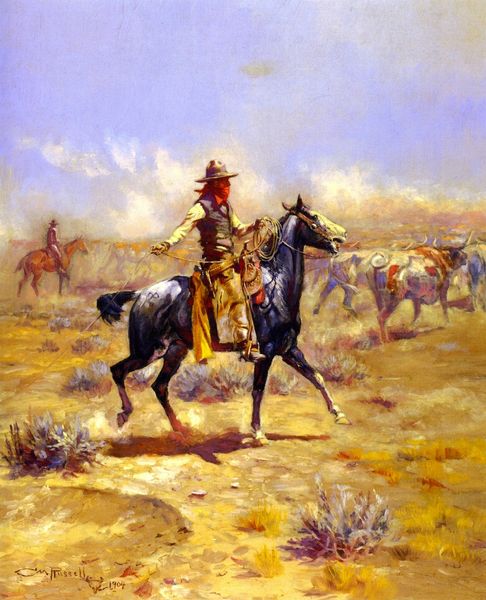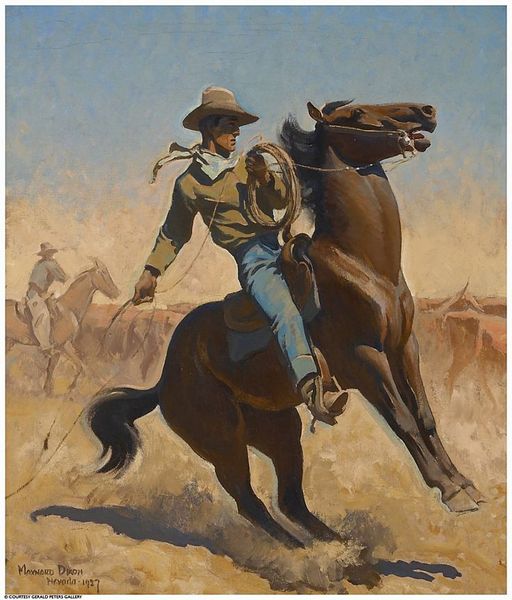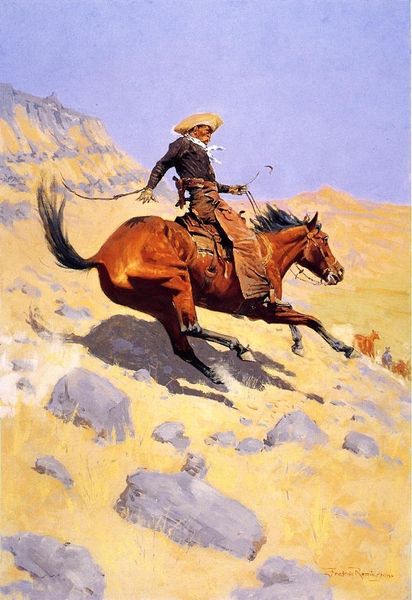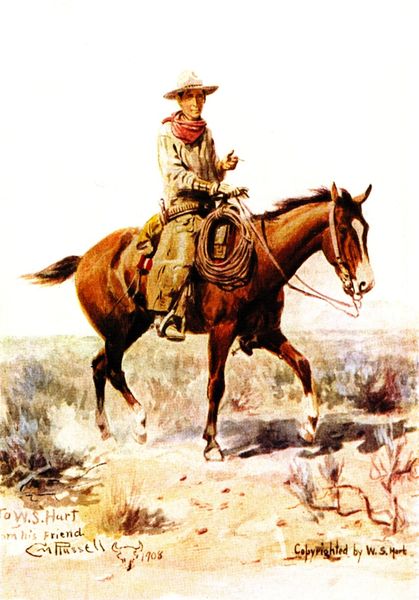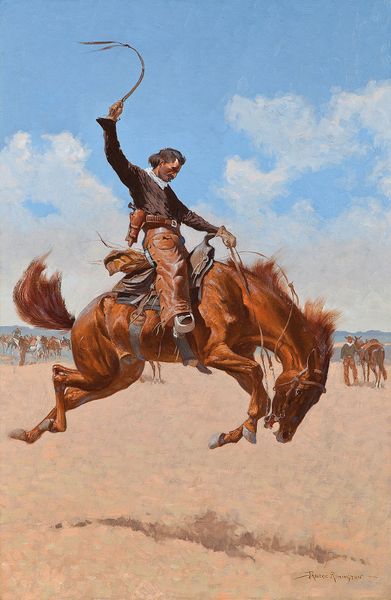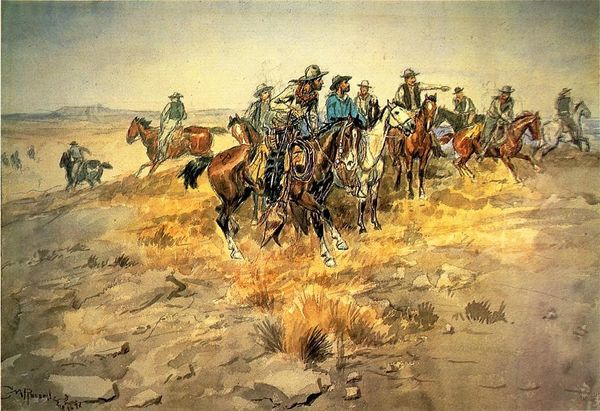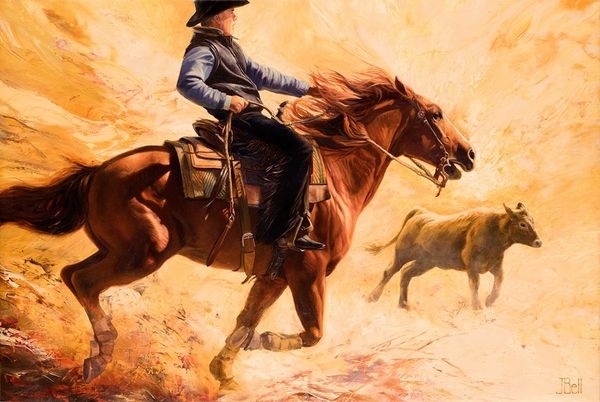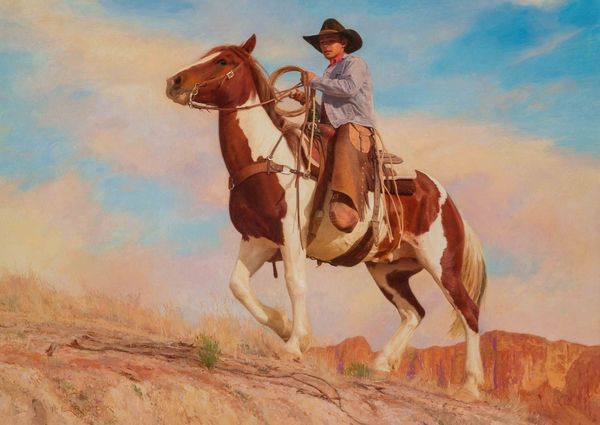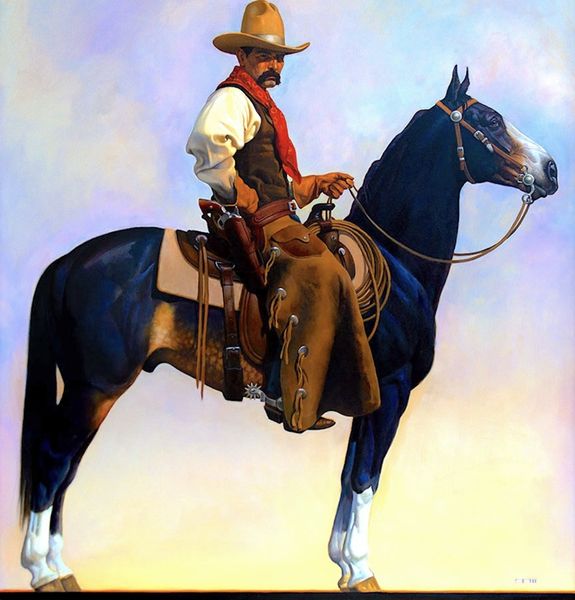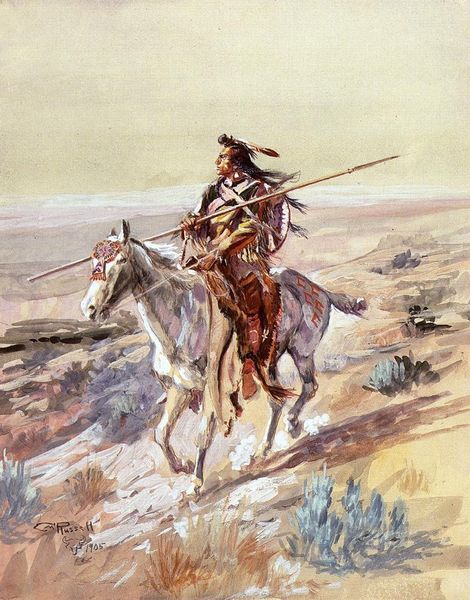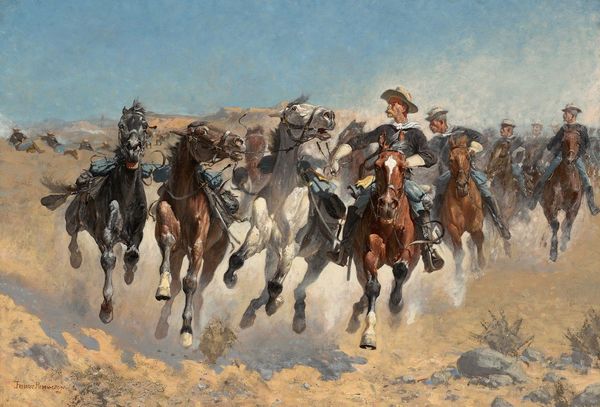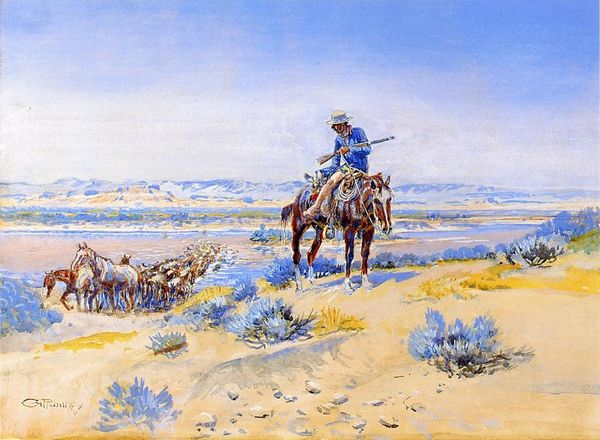
Copyright: Public domain
Editor: This is Frederic Remington's "The Trooper" from 1892, an oil painting showcasing a U.S. Cavalry soldier. It's dynamic and immediately brings a sense of movement. What do you see in this piece, focusing on its materials and context? Curator: The impasto application of the oil paint is quite striking. Consider the physical labor involved in building up these thick layers, particularly to capture the light reflecting off the horse's sweat and the dust kicked up. Remington wasn't just depicting the West; he was actively participating in the romanticized image-making of the American frontier and the manufacturing of that image through paintings like these. Look closely, where did Remington source the pigments from? Editor: I hadn't thought about the pigments themselves. Presumably, they were mass-produced and readily available, even then, contributing to a certain... standardization of the Western narrative? Curator: Precisely! It connects to a broader system of production and consumption. Furthermore, the horse tack. The soldier's uniform… Mass-produced commodities integral to the military-industrial complex, projecting both power and conformity onto this landscape. How does understanding this production change your perception? Editor: It complicates it! What at first glance seems like individual heroism is interwoven with industry and even imperialism. It is not the glorification of action; rather it shows the human as one of the production outputs. Curator: Absolutely. Seeing how this imagery was produced and consumed back then helps to expose the layers of social and industrial systems at play in shaping historical narratives. Editor: So it’s not just a romantic portrayal of a trooper, but a visualization of broader capitalist processes? Thanks for that point of view!
Comments
No comments
Be the first to comment and join the conversation on the ultimate creative platform.
